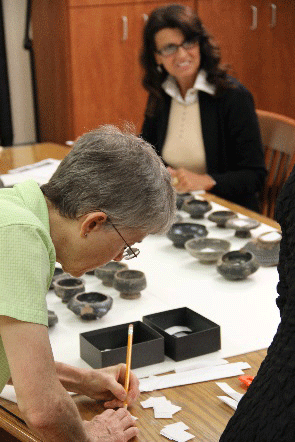
Hidden Treasure of Rome Project: The Museum of Art and Archaeology is partnering with the Capitoline Museum in Rome, the oldest public museum in the world, to study ancient Roman antiquities recovered from downtown Rome in the later 19th and early 20th century but never previously studied or fully catalogued and described. Italy has never before allowed such a project, and we are excited to serve as the first venue for a project of this kind. As each group of objects is fully catalogued, documented and analyzed it will be returned, and another group of objects sent as the next loan in an iterative project.

The objects in the first batch are mainly Republican-era black gloss ceramics. Research includes analysis of the stamps and markings, linking them to published catalogues of makers-marks and stamps created, detailed stylistic analysis, and detailed compositional analysis using X ray fluorescence spectrometry and neutron activation analysis through the MU Research reactor, to determine where the material was produced and isolate production processes. We’re also experimenting with some advanced imaging techniques (Polynomial Texture Mapping) to capture fine-scale surface details of stamps and markings, and working with visiting scholars at the Reactor Center to study specific lead isotopes which may help separate compositional signatures otherwise too similar to reliably differentiate.
All work is being done in continuing consultation with archaeologists from the Capitoline Museum by Museum staff and MU faculty and students, and all results will be fully shared and reported in the formats specified by our Italian colleagues. Missouri was chosen for the pilot project because of the combination of an accredited museum, doctoral program in classical archaeology, and advanced archaeometric capacity and expertise, allowing iterative discussions between the individuals doing formal, XRF and NAA analysis to effectively address collaborative research questions.